Growing up in Silicon Valley, Nuritzi Sanchez saw the powerful impact software can make on the world. Yet, unlike many others who were also steeped in the tech industry, her journey has taken her into the world of open source, where she is contributing to that impact.
After graduating from Stanford University with a degree in International Relations, she became a founding team member of open source computing company Endless OS, served three terms as president and chair of GNOME's board of directors, and in February 2020 was hired as the senior open source program manager (OSPM) at GitLab.
I am impressed by this talented woman, and I reached out to her to learn more about her and her work. I believe you will also be fascinated with her journey after reading our interview, which has been lightly edited for clarity.
Don Watkins: How did you get started with open source?
Nuritzi Sanchez: My first experience with open source software was using an Ubuntu-based computer at an immigration law clinic when I was interning there as an undergrad. I remember being really surprised that something other than Macs and Windows existed. I had a good experience using the Ubuntu machine.
Later, in 2012, I helped start a company called Endless that aimed to make computing universally accessible. By leveraging the power of open source software, we wanted to create computers that were great for users that had little to no access to the internet or were new to computers.
As I deep-dived into that world, I was amazed by how vast the open source application ecosystem is. In my college years, I had become an Apple fangirl, and I immediately noticed the difference in user experience and design. Thanks to the CEO and founder's strong interest in great design, Endless was created from the beginning to delight users. Our team hoped to bring more user-centered design to the Linux desktop world.
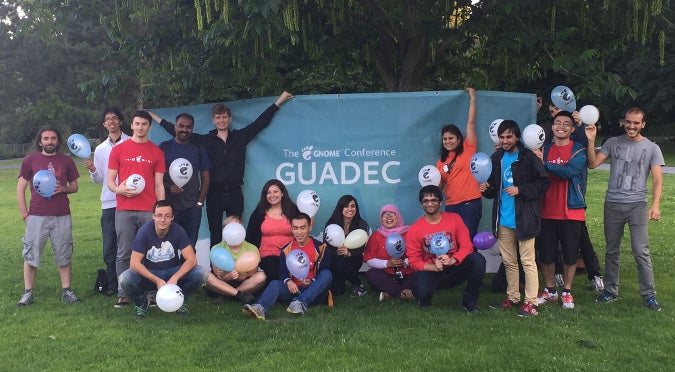
GUADEC 2015 newcomers' event (Nuritzi Sanchez, CC BY-SA 4.0)
In 2015, I gave my first talk at GUADEC (the GNOME community's largest conference) about adapting GNOME for the developing world. I didn't know what to expect going into the conference since that was the first time I'd attended an open source software event, and I was incredibly impressed with how friendly and welcoming the GNOME community was. The newcomers' and social events helped me bond with the existing community, and when I attended a Birds of a Feather (BoF) session, I noticed that my project management and leadership skillset was immediately useful. Even though I was new to the community and was not an engineer, I felt like I could immediately contribute. I wished I had known about GNOME and the open source world years before!
DW: What is the power of open source for you?
NS: Open source software helps democratize the world and enables us to solve the challenges we know best. You can build on top of the work that others have done in order to solve unique challenges around you instead of having to recreate something completely from scratch. It thus spurs innovation.
Since a lot of open source software is not only free as in philosophy but also free as in price, it also gives people who may not otherwise be able to afford it access to tools that are essential to be part of the modern workforce.
DW: How did your family background drive your interest in open source?
NS: My parents are from Mexico, and when we visited family there, I was struck by the differences between where I was growing up, in the Silicon Valley, and where my parents were from. Sometimes we would visit towns where people had cardboard instead of windows, elderly people were sitting in the heat trying to sell artisanal goods they made, and poverty was visible in every corner. I heard heartbreaking stories about the struggles that people were facing, and as an empathetic kid, that all greatly impacted me. I wanted to do something to help.
During my undergraduate years at Stanford, I really struggled to find just one thing that I was interested in. I was drawn to social impact initiatives, but I wanted to help people be healthier, have access to great education, find jobs, and feel fulfilled. I basically wanted to do all the things. This led me to explore many potential career paths through internships.
Unsurprisingly for someone who grew up in the Valley, I ended up believing that getting involved with software was the best way for me to make a huge impact. I saw how just a small team could create software that was used by millions of people and could impact their lives. It seemed like a superpower. I then became enamored with open source software because of all the reasons I've mentioned above. As a bonus, open source software usually already has an international community, and as I've gotten more involved, I've been keen on helping to expand its reach.
DW: How has your involvement with Endless shaped your vision and direction?
NS: One of the things that I loved about Endless is how much the team valued getting to know its users. Every employee was able to go to one of Endless' target markets and do in-field research. We were able to meet people whose lives we were actually being impacted by our work.
My time at Endless allowed me to travel and become immersed in different cultures to an extent that I wouldn't have had otherwise. I sometimes spent several months in a target market when I was helping with special initiatives. I met people from the international open source community who are extremely dedicated to the open source philosophy—and I also learned more about the challenges they face when contributing.

Endless OS user testing in Guatemala (Nuritzi Sanchez, CC BY-SA 4.0)
The other theme is the importance of user-centered design. I'm very grateful to have been part of a team with extremely talented designers and executives that believed that great design was essential. Our COO attended the Stanford d.school and helped infuse the company with an appreciation for design thinking. Similarly, our CEO had a sharp eye for things being pixel-perfect and always challenged our designers to create beautiful software. I developed a certain aesthetic and a deep appreciation of the design process. My time at Endless helped me appreciate some of the unique challenges that designers face when trying to contribute to open source software.
DW: Diversity and inclusion are really important to you. How does diversity improve products and communities?
NS: Diversity of thought is something incredibly important when solving any kind of challenge. In order to do that, you need to bring in people from diverse backgrounds. New perspectives often bring new insights or new ideas into the mix.
One of the tangible examples I have from my time at Endless is when we were working in Indonesia and wanted to do user research there to better understand the market. One of our Endless Ambassadors, Siska, belonged to a group of housewives that met regularly, and she introduced Endless at one of their meetings. Many of the housewives who attended got really excited about Endless and told their partners and children about it. Being great networkers, some of them helped us find people for our user research studies and became evangelists of our product in their communities. It was something that, at least to me, wasn't a normal path to take, and it was something that was hugely beneficial.
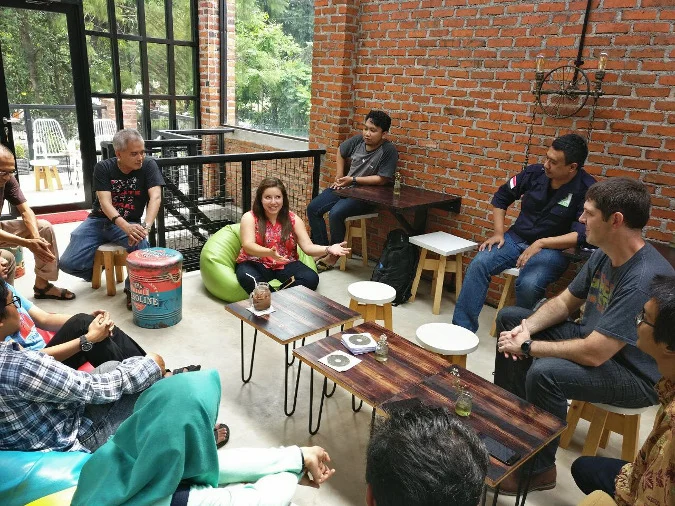
Meeting with Endless OS community members in Indonesia (Nuritzi Sanchez, CC BY-SA 4.0)
DW: What led you to leave Endless and move to GNOME?
NS: Endless did a lot of things right, and it still faced a lot of the challenges that all open source desktops face in a world that is dominated by Microsoft. Endless had to make some hard choices about how to evolve its strategy and also started to explore some new ideas—like how to make Endless a great platform to teach children how to code. It was during this time that we parted ways, but I continue to be a huge fan and still use Endless OS on my personal computer.
I ended up taking some time off after Endless to travel and to continue my third term as the president and chairperson of the board of directors at GNOME.
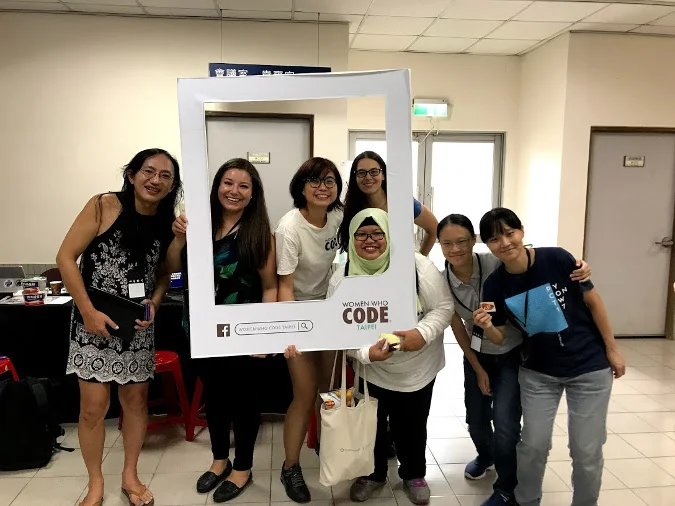
Meeting with Women Who Code Taipei (Nuritzi Sanchez, CC BY-SA 4.0)
DW: GNOME experienced tremendous growth during your tenure. What do you attribute that to?
NS: There were many things that factored into the growth we saw during my tenure. Here are the most important ones:
-
Improving the newcomer's story: Carlos Soriano, Bastian Ilso, and Christian Hergert, in particular, really helped set GNOME's momentum in motion by working on a newcomer's guide for code contributors. They developed the workflows and tools that made an immediate impact on our community's growth. Later, Carlos led an evaluation of tooling and helped GNOME find GitLab as the solution to further simplifying the contribution process.
-
Broadcasting our story and promoting our brand: As part of the Engagement team, I helped to amplify our work on the newcomers initiatives and helped to build our brand and online presence. GNOME's work on improving the newcomers' story gained a lot of interest within the wider community and brought about new interest in the GNOME project, and we used that to help build the sense that GNOME was in forward momentum. Marketing, brand, and dedicated community-building are really important for open source organizations.
-
Flatpak, Flathub, and Builder! There were several technological innovations that helped propel GNOME forward. For example, Flatpak and Builder helped to make creating a GNOME app easier than ever, and users were able to find and install apps directly from Flathub. These innovations were huge because they made it possible for anyone to create and enjoy great Linux desktops. Furthermore, it helped unify the Linux desktop community a bit since any distribution that enabled Flatpak apps could benefit from easier distribution and management of apps.
-
Hiring an executive director (ED): GNOME had been without an ED for several years before I joined. With the help of a hiring committee, the board soon interviewed several highly qualified candidates for the ED position. Leveraging my startup experience in hiring, I worked with our vice president at the time to figure out all the logistics behind hiring our first-ever non-US employee and closing the loop. We soon announced that Neil McGovern would join as the GNOME executive director. This was an important step for us since the board had absorbed the ED's responsibilities while the position was unfilled. Since the board was elected annually, that meant that planning long-term, strategic initiatives was rather difficult because of turnover.
-
Dreaming new dreams: While I'm biased, I do think that Endless' new perspective helped the GNOME community to dream a new dream and start creating GNOME for a user beyond the "typical Linux desktop user." This meant working on features that enabled a less tech-savvy, more design-sensitive, and less-connected user. Since Endless worked heavily upstream, GNOME experienced an influx of contributors from Endless' employees and Endless' ecosystem. This, combined with the newcomers' story, helped propel GNOME into an era of being more accessible to more people around the world. This also helped attract donations from organizations, including a $1 million pledge that helped GNOME dream new dreams. As part of that, the board decided that expanding the GNOME Foundation would help sustain GNOME's momentum and that employees would be hired for the first time ever to work directly on aspects of the project, like on GTK and event planning.
-
Restructuring the GNOME Foundation: One of my short-term goals upon hiring our executive director was leading the board of directors to be more of a strategic entity and allowing the day-to-day work to be handled by employees. I proposed having a board hackathon so that we could set aside time to do some strategic planning, reassess how we did budgeting, and also work on important initiatives that often got pushed to the side. The first hackathon was a success, and it's now an annually recurring event. Once the employees had been hired, we worked on transferring responsibilities to them and helping to integrate them into the larger community. There were some challenges we faced along the way, but overall, this went smoothly, and the community was excited about seeing the Foundation grow to support its needs.
-

Linux App Summit 2019 (Nuritzi Sanchez, CC BY-SA 4.0)
New policies to enable growth: While on the board, I helped with some initiatives that also helped us build momentum. Two such policies were our Code of Conduct and our Travel Policy. These two helped make the GNOME community more inclusive and helped show that GNOME cares about continuing to build a great and diverse community.
-
Linux App Summit: Finally, another thing I think helped was the work we did around creating a new conference, the Linux App Summit. While the conference started in 2016, in 2019, we joined forces with KDE. This doubled attendance and showed the world that KDE and GNOME could work together towards a greater purpose. As part of the founding team of that conference, I'm very proud of our work there.
DW: You've recently moved to GitLab as senior open source program manager (OPSM). What are you doing there? What are your short-term and long-term goals there?
NS: I am thrilled to be at GitLab! My main focus right now is on the GitLab for Open Source program, which offers our top tiers for free to qualifying open source projects. As part of that program, we also help large open source organizations with their migrations (GNOME, KDE, Drupal, etc.). I'm working on formalizing aspects of the program and streamlining processes that will allow us to scale the program.
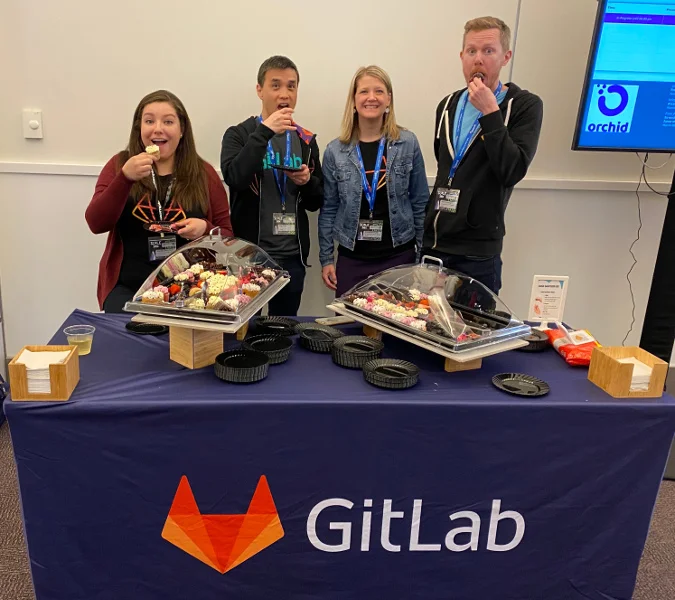
GitLab's community relations team (Nuritzi Sanchez, CC BY-SA 4.0)
As I work on this program, I'm being exposed to new open source communities, and I'm learning more about the DevOps world. It's been incredibly rewarding already! My hope is to help make GitLab the best place for open source organizations to thrive at scale, and in order to do so, there are many pieces involved. I see myself advocating for features that are important to open source projects, facilitating communication between our community and our internal team, and working with the community relations team to help make it a great experience to be part of our community. Apart from that, one thing that I've been interested in is how to help make open source more sustainable, so I'm keen on continuing to learn about and explore that topic. Last but not least, I’m also very excited about the work that the CHAOSS community is doing on creating metrics to measure the health of open source communities. I recently joined a new working group there to create a set of metrics that foundations like GNOME and KDE can use to measure their community’s health.
DW: Would you recommend other open source companies have OSPMs? What about non-open source companies?
NS: Since software is eating the world, and open source software is eating the software world, I absolutely would encourage companies to devote more resources into understanding their dependency on and growing their involvement in open source software.
If a company is just starting off or isn't able to have an open source program office (OSPO) right away, having an open source program manager is a great entry point. These early hires can help lay down some initial structure and work on high-priority initiatives relating to the open source work that the company is doing or wants to participate in. This can later turn into a larger program office if and when the company is ready for that.
I appreciate the time Nuritizi took to share her journey with me and the work she's doing to support open source and the communities that build up around open source projects. If you'd like to learn more about her, I recommend you join me in following her on Twitter.



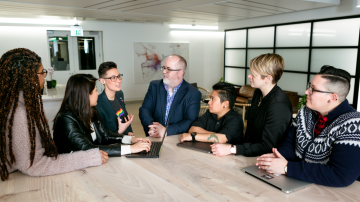



Comments are closed.